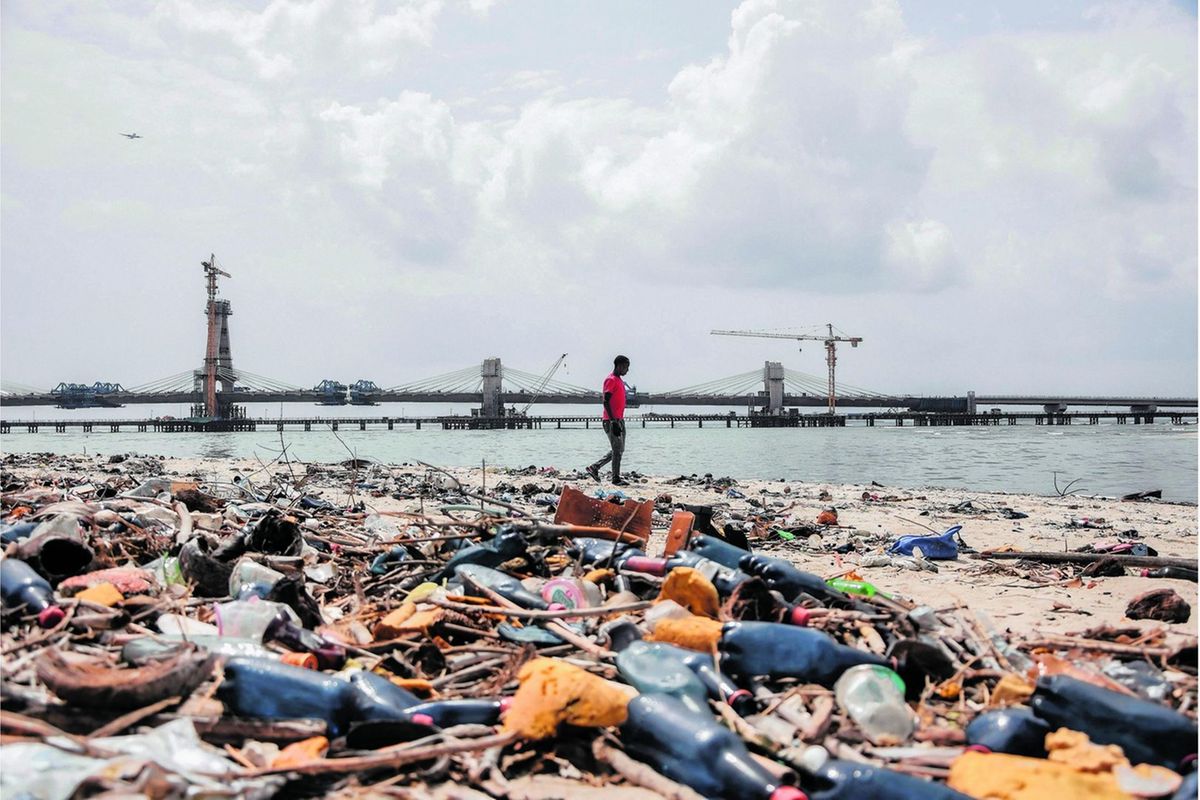
Plastic pollution in East Africa has been described as an “epidemic”. It has choked rivers, drainages, farmland, and grazing grounds, killing livestock.
According to UN-Habitat, the greater Nairobi area, with a population of 5.1 million, generates about 3,207 tonnes of waste per day, 20 per cent (641 tonnes) of which is plastic. That is horrible, yes, but go to the Atlantic Ocean flank of the East African Community, the Democratic Republic of Congo, and it’s worse.
With a population of nearly 100 million, almost double Kenya’s – and 304 per larger – the plastic crisis is also several times bigger. The DRC’s capital Kinshasa has a population of a whopping 15 million and a bigger plastic waste migraine.
Kinshasa produces about 10,000 tonnes of waste per day, 12 per cent (1,200 tonnes) of which is plastic waste. The Kenya Defence Forces are in the DRC as part of the East African Regional Force (EARF) to help the country stabilise its rebellion-wracked eastern regions. However, the best way KDF can save DRC is to teach it how to contain plastic waste.
Unlike Kenya and other EAC countries that banned plastic bags, the DRC hasn’t passed such laws. Now, if a country that has banned plastic looks like Kenya, one can imagine the situation in DRC.
The vast DRC is famous for having some of the worst infrastructure on the continent. There is no uninterrupted tarmac road connecting the city of Goma, near the border with Rwanda, where the EARF is massed, hoping to prevent it from being overrun by M23 rebels, with Kinshasa – 2,657 kilometres away. This pattern repeats itself in most of the DRC.
The unusually brutal Belgian colonialists were not even remotely enlightened occupiers.
They mostly flopped and chopped off the arms of the Congolese to punish those who did not meet their rubber production targets and to terrorise local communities to ensure that the quotas were met. In all, the Belgians are estimated to have killed 15 million Congolese. It stands to reason that they were not interested in building roads.
The DRC’s longest-ruling post-independence leader, the corrupt military dictator Mobutu Sese Seko, had been in power for 32 years – from 1965 to 1997, when he was ousted in a rebellion. Mobutu didn’t do the post-independence splash on infrastructure that was witnessed in countries like Kenya and Uganda because the way Belgians left things served him well.
Ruling over a country that was then, as today, had restless eastern provinces, having no roads helped him limit the threat of opposition. It became virtually impossible for military units cut off from each in regions that were thousands of kilometres apart to coordinate a coup against him. Neither could the democratic political opposition do what the National Rainbow Coalition did in Kenya in 2002.
This picture has made plastic very deadly in DRC in unique ways. Blessed with good rain and rich in water, without roads, river transport is a significant means of getting around the country. However, the uncontrolled mass of plastic is disrupting river transport. It is the ground equivalent of having a mound of plastic waste cutting off the road to Nakuru or Mombasa.
In Kinshasa itself, which is given to flooding, in recent weeks, parts of the city have been swamped by plastic making it hard to swim or use a boat.
A long drive over the holiday was a reminder of just how big a problem plastic is in East Africa, whether a country has banned plastic bags or not. Small towns are littered badly with plastic, and you see it hanging on hillsides and cliffs. The only exception is Rwanda, which has a zero-plastic policy and enforces it unforgivingly.
What can the other East African countries do to deal with the plastic menace since bans have not had the level of good outcomes the laws envisaged? Unblinking Rwanda-style enforcement might be an excellent place to start. However, even in Rwanda, it’s a mistake to put all the success against plastic down to enforcement. There are specific post-genocide social formations in the country that have made enforcement productive that are absent in the rest of the EAC.
One of the bigger problems in the other EAC countries, as indeed in most parts of the world, with plastic and other waste, is ownership. There are no definitive figures about the percentage of the Nairobi population that owns the city – a house, a business building, a school, or a green patch – but some estimates (mostly by political radicals and civil society) say only one per cent are owners. When you get to places like Kinshasa, it’s probably 0.1 per cent.
Keeping an African city or town clean, let alone free of plastic, with this ownership profile is extremely difficult. There are parts of the world where slum dwellers were given titles to the land where their shacks sat, and miracles happened. One of the most impossible undertakings on this side of Earth must be how to socialise ownership of Nairobi. However, if we can’t figure it out, it will be lost to waste.
Share this news
This Year’s Most Read News Stories

Elon Musk’s company to launch internet in Tanzania
Elon Musk’s Starlink internet service is expected to be available in Tanzania in the first quarter of 2023, with analysts saying the new development will boost the digital economy.Continue Reading

ACT-Wazalendo calls for withdrawal of mandatory travel insurance in Zanzibar
Starting October 1, all visitors to Zanzibar will be required to purchase a mandatory travel insurance policy costing $44 at the point of entryContinue Reading

Juma Haji Duni: A legacy of resilience and leadership in Zanzibar politics
The recurring inefficiency among some contractors could lead the government to favour foreign firms, sparking criticism from stakeholders advocating for local participationContinue Reading










